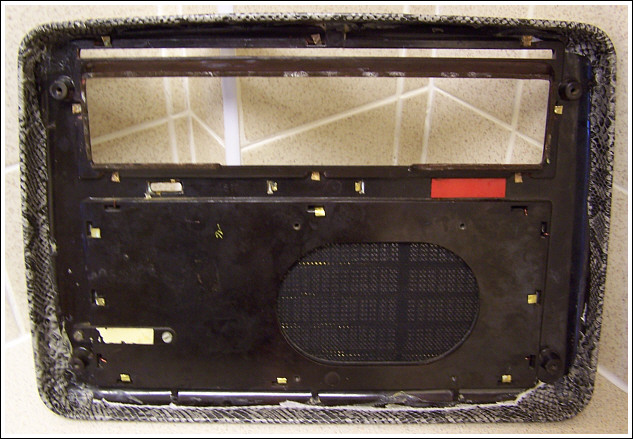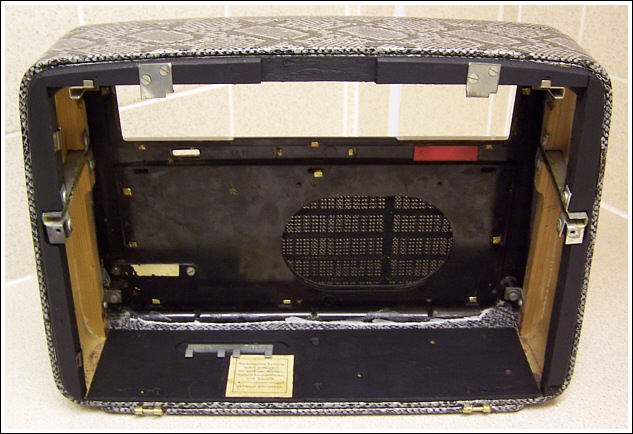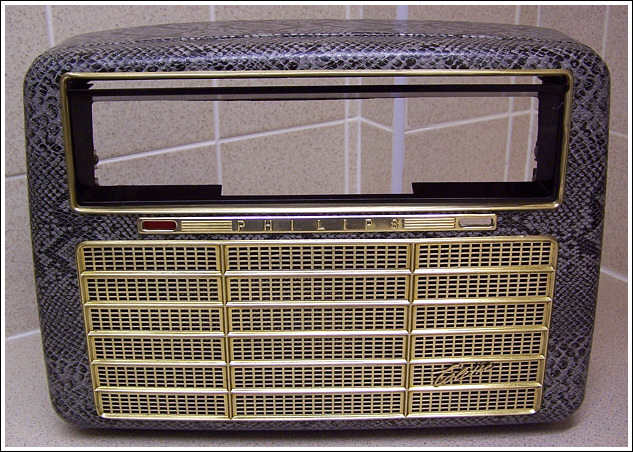
3. Case Restoration
Whilst searching for a suitable replacement covering I came across some grey and black vinyl imitation snakeskin material with a cloth backing.
Since quite a few other German portables of the period had snakeskin coverings, several models by Akkord for example, I decided it would also be acceptable for the "Colette".
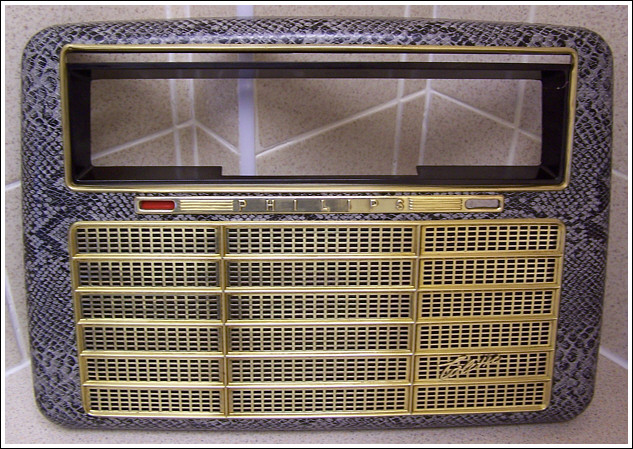
I was further encouraged by the excellent work of well respected Austrian collector Gerhard Heigl who has also restored one of these sets by covering with a similar material and the end result was quite simply superb.
In addition I was comforted by the fact that nothing I was about to do would be irreversible - if a more authentic cloth came along at a later date the set could always be reinstated to the original colour scheme if so desired. However, to be honest I wasn't too keen on keeping the red and cream colours, to my eyes they just didn't look right.
I began the restoration of the set by completely dismantling the case and removing all of its fixings and trims. I removed the red paint from the grille by immersing it in a shallow tray containing a jelly-type paint stripper.
Afterwards the grille was washed clean in warm water and dried, then it along with all the other brass trims were cleaned with foam cleanser, polished with Brasso wadding, and given a spray coat of clear acrylic lacquer to prevent further tarnish.
Paint stripper was similarly used to remove the red paint on the bakelite around the tuning dial, which was then polished with Brasso to a high gloss.
I soldered several small pieces of thick gauge copper wire to the rear of the grille in place of the broken metal fixings so that it was possible to secure it firmly to the bakelite front.
Also at this point I painted over the original red areas inside the wooden middle of the case with a matt black finish.
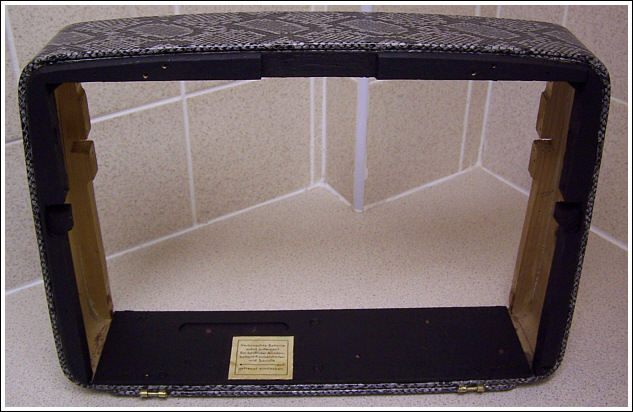
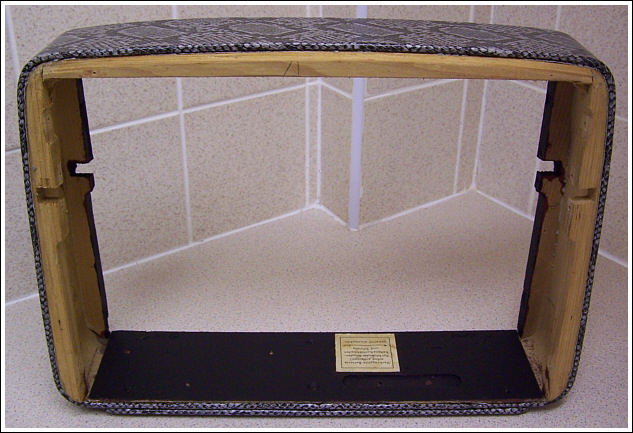
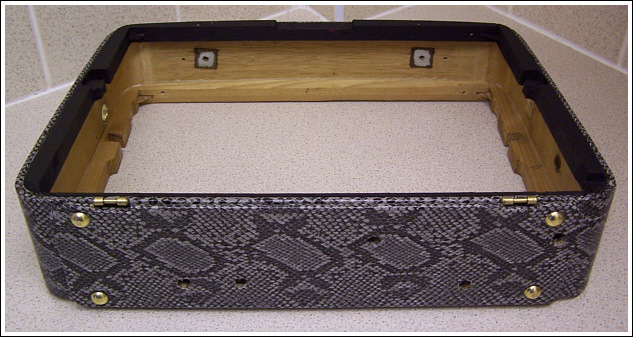
I removed the old cloth from the case very quickly and easily, it was that dry and brittle that it just peeled away in large pieces with little effort.
Suitable sized pieces were cut from the snakeskin material I had obtained, taking care to match the pattern on the front and back sections. To fix the new cloth I used vinyl floor tile adhesive.
This adhesive has the advantage of staying wet for 15 to 20 minutes, giving sufficient time to apply with a small brush and to allow the cloth to be positioned correctly on the case sections - it is also water-based and so any excess can be easily removed with a sponge.
The two bakelite sections are curved and have rounded corners, so it was necessary to stretch the cloth in order to remove any wrinkling.
I found the best approach was to apply a liberal coating of adhesive to the bakelite, position over the laid out cloth, wrap the cloth over the edges of the case and secure temporarily with spring-type wooden clothes pegs.
I was then able to smooth out any bubbles of air trapped underneath and gradually work my way around the edges replacing the pegs with strips of tensioned masking tape.
After 12 hours or so the adhesive had dried sufficiently so that all the masking tape could be removed - I was then able to trim any excess material and secure any minor areas that had not stuck down correctly.
Further tensioning and gluing where necessary provided a permanent wrinkle free result.
